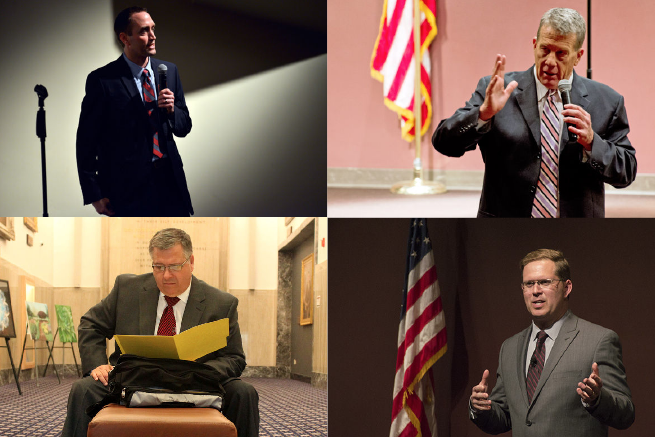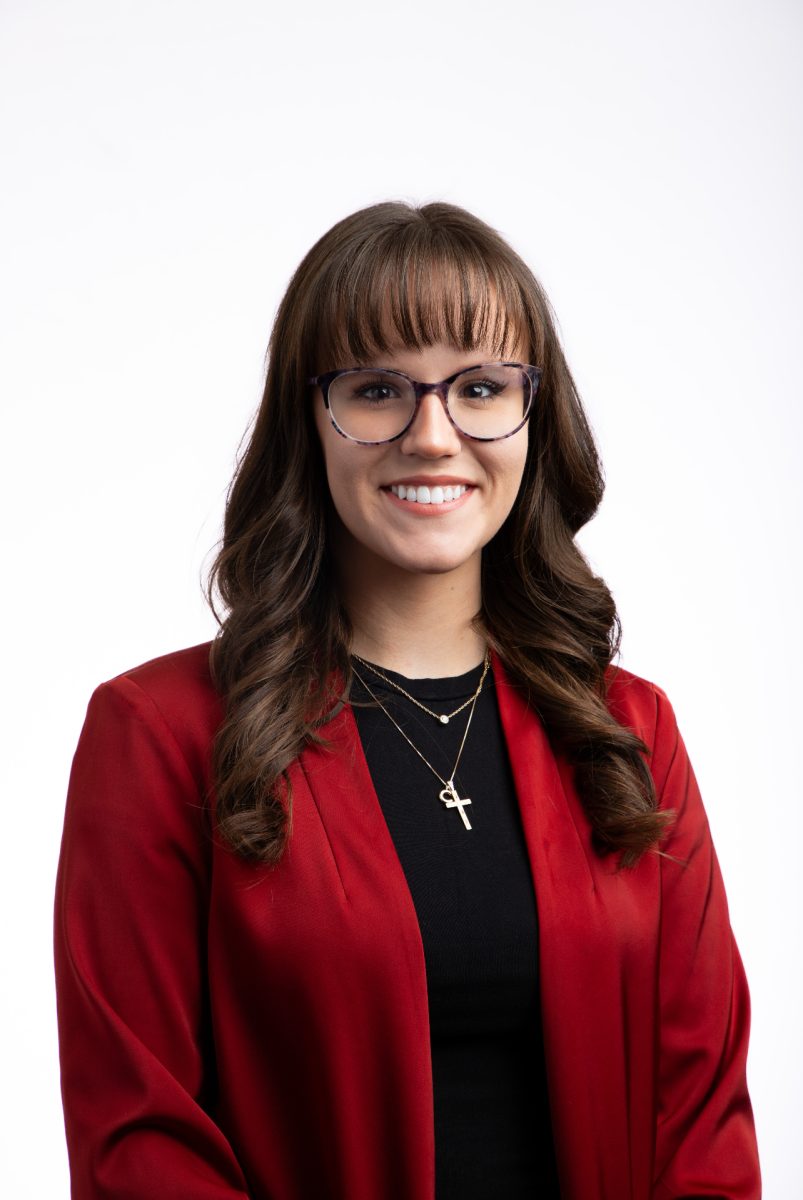Pros and cons of the four athletic director candidates
April 27, 2015
There is a final four in many sports tournaments, but only one can win.
The same is true for the SIU athletic director position, which also has four finalists and has been vacant since Mario Moccia started the same job at his alma mater, New Mexico State University, in January. Here are the pros and cons of the four finalists.
Leon Costello
Advertisement
Costello has been the deputy director of athletics at South Dakota State University since July 2014. Before that, he held multiple positions at the University of Northern Iowa between 2002 and 2010, including associate athletic director and external relations.
Costello is my top choice. My main skepticism was his age. Costello is young, but it ended up being his biggest advantage. He has a simple idea: appeal to the target audience — students.
He wants to boost social media through Twitter and Snapchat, and he has a point. People today walk everywhere with their face in their smartphone. If he were to put a T-shirt on campus, and he sent a Snap to the story so the first student who found it got to keep it, hundreds of students would follow if it was advertised properly.
Then, that same following sees game times and has a more likelihood of going to the game.
Costello said he would hand out business cards to student athletes for them to hand out to their classmates and teachers. They are such simple cost effective strategies, which leads to more students, which fires up the team to play better, which attracts more fans from the southern Illinois community.
He helped start an auction at SDSU, which he said brings in an average of $500,000 every year — that could pay for 32 to 33 scholarships.
His best strength is the revenue he can bring in through these simple techniques.
Advertisement*
Costello’s biggest weakness is the lack of experience dealing with budget cuts, which are going to be crucial if Gov. Bruce Rauner’s proposed cuts go through. He went through one round at SDSU and multiple rounds at UNI, but it would be interesting to see what decisions he makes.
Rick Hartzell
Hartzell served as director of athletics for the University of Northern Iowa from 1999 to 2008.
He was the most open candidate of the four. Hartzell gave a packet of his whole plan and ideas to anyone who wanted it, not just the people involved in the process and the media.
Hartzell has more experience as an athletic director than the other candidates, and made it clear he can make tough decisions regarding budget or under performing sports. Hartzell said football and men’s basketball has to win at SIU.
Again, age did not seem to be an issue. Hartzell had an advantage going into the process. Hartzell would make a fantastic athletic director, but he would need some younger people on the staff to take the ideas of boosting social media and revenue.
It could be ideal to bring in Hartzell as AD and Costello as an assistant, and have Costello take over after Hartzell retires. Hartzell said this would be his last job.
However, this option is unlikely. SDSU has had more on-field success recently, and the state has fewer economic issues than Illinois. Costello has shown he can be an athletic director someday. It is doubtful he waits 10 to 15 years, which is how long Hartzell said he has left.
Richard Darnell Jr.
Darnell Jr. has served as senior associate athletic director-development at the University of Illinois at Urbana-Champaign since 2012. He was previously the executive director of athletic fundraising at Baylor University. He also served as associate athletic director for development/executive director of the Vandal Scholarship Fund at the University of Idaho from 2004 to 2007.
He is the nicest of the candidates, and clearly has respect for everyone. That is something which works well in business, which is what athletics is.
Darnell asked for the names of people who asked questions at his forum. He called on media members by name. He is a likeable guy.
He also comes from the Big Ten Conference, which is attractive because it is a large revenue conference with more success than the Missouri Valley Conference.
The man is as sharp as a tack, and would probably be the best of the four at making cuts with the budget.
Darnell was clear about his five-part plan, but he seemed nervous during his presentation. Sometimes the most nervous person is the one who wants the job the most.
But, he did not draw me into the plan. There were times where he crossed his legs on stage, he did not seem as confident as other candidates.
He used 15 of his 45 minutes at his forum to promote SIU, rather than promoting himself or answering questions. It is slightly worrying to see such a nice person because it shows tough decisions might not be made.
Darnell could make the athletic department thrive at SIU, but his presentation was his only selling point to me, and it was not perfect.
Tommy Bell
Tommy Bell serves as the director of athletics at Western Illinois University. He previously served as the director of athletics at Indiana Purdue Fort Wayne.
Before that, Bell spent six years as the Constituent Development Officer for SIU Athletics. He led the capital campaign efforts for the Saluki Way master facility plan.
Unlike Darnell, Bell made a great presentation, which was his most attractive aspect. He was calm and collected and simply sold himself as a man who loves SIU.
His resume is attractive because he has direct experience at SIU. He worked on Saluki Way, a major renovation to athletic facilities, which is one of the biggest accomplishments of athletics in the past decade.
He has an understanding of the difficulties mid-major athletic programs face, and he has a great understanding of how to promote the positives.
However, Bell was not as open as the other three candidates. He pitched a 10-point plan called “Restoring the Glory”, but he only touched on three of the points, which were basic and also mentioned by the other candidates.
He, like the other three, is not a bad choice by any means. But the lack of detail with his plan makes it hard to stand behind him completely in times with impending budget cuts and underperforming large revenue sports teams.
The final four is usually the cream of the crop in sports. The search committee clearly did its homework to present four solid candidates to the public. Any direction it goes can make the program thrive, but the best option is to invest in the youngest candidate who can relate best with the technology today.
Advertisement









